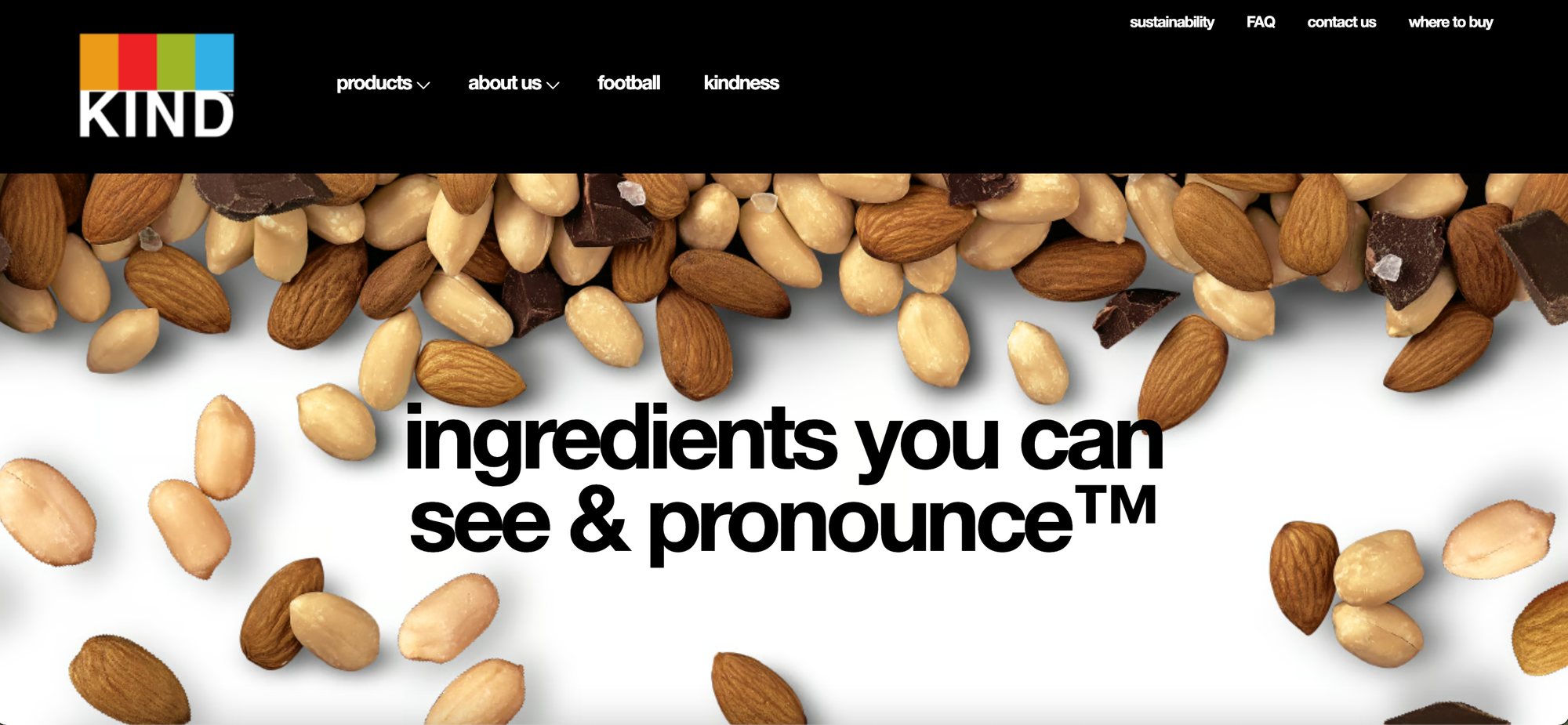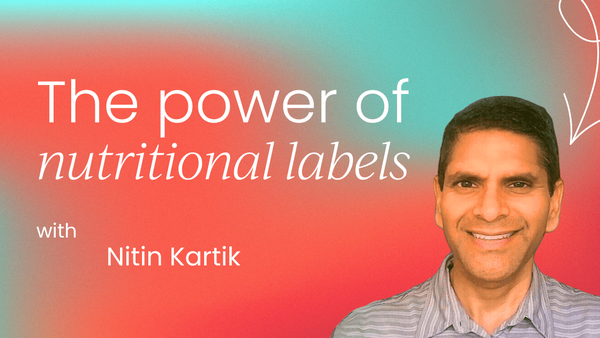In today's world of transparency, where consumers demand honesty and insight into their purchases, nutritional labels have evolved from simple regulatory tools to powerful communicators of brand values and product differentiation.
Product marketers can glean valuable insights from the journey and impact of nutritional labels to craft more transparent, trust-building, and education-driven strategies that resonate deeply with their target audience.
By examining how nutritional labels are crafted, presented, and supported by educational campaigns, product marketers across sectors can learn to deliver clearer, more persuasive product messaging and improve consumer trust.
Here, we explore the valuable lessons nutritional labels offer product marketers looking to elevate their brands in an authenticity-driven marketplace.
Lesson 1: Clarity and simplicity build trust
Nutritional labels are designed to provide a concise overview of what’s inside the product. For consumers, complex language or unclear metrics only serve to erode trust, as they may feel that important details are being hidden.
Brands like Kind Snacks, for example, gain a competitive edge by using simple language that consumers can understand, establishing the trust that consumers crave.

The first takeaway from nutritional labels is the importance of clarity in product messaging. Product marketers can apply this by avoiding jargon and sticking to straightforward language that consumers understand without the need for a dictionary.
Whether on a website, packaging, or ad, clarity in messaging encourages consumer trust by making the product’s benefits easily accessible.
Additionally, prioritizing high-level information – think key differentiators, primary benefits, or notable features – at the forefront of product messaging can encourage conversions, as consumers don’t need to wade through unnecessary information.
Use clear, direct statements about what the product does, for whom, and how it stands out, allowing consumers to connect with the product’s core benefits.
Lesson 2: Transparency differentiates your brand
Nutritional labels are valued for their information and transparency, offering consumers the details they need to make informed choices.
Nutritional information, especially when it includes certifications like “Non-GMO,” “Organic,” or “Fair Trade,” assures consumers that the brand is willing to be transparent, even if it means sharing that some ingredients might not be perfect.
This transparency doesn’t deter customers; it reinforces brand authenticity and can even serve as a point of differentiation.
A commitment to transparency in all aspects of a product’s story – from sourcing and manufacturing to pricing and feature set – is essential to building brand loyalty.
Marketers can reinforce transparency by highlighting the values that drive product development, such as sustainable sourcing or ethical manufacturing, and making those principles a visible part of the brand’s narrative.
Transparency also applies to a product’s limitations or compromises. If a feature is still in beta or has restrictions, don’t obscure it. Instead, frame these aspects as part of an iterative improvement process that keeps customer satisfaction at the forefront.
Brands willing to discuss their process and evolution with candor are often perceived as more reliable and customer-focused, gaining an edge in a trust-driven market.
Lesson 3: Educational campaigns amplify consumer empowerment
Nutritional labels may list the facts, but without educational campaigns explaining why certain metrics matter, they may be less effective.
Companies like Impossible Foods have mastered the art of education-driven marketing by not only providing clear nutritional information but also launching campaigns that explain how plant-based ingredients compare to traditional meat sources.
This empowers consumers to understand the product on a deeper level, aligning with their dietary or ethical values.
Educational campaigns help bridge the knowledge gap and make complex information accessible. Product marketers can learn from this approach by developing content that educates consumers on key features, use cases, and differentiators.
For instance, an educational blog series, explainer videos, or interactive content can address frequently asked questions, guide users on how to maximize the product’s value, or break down technical features into relatable terms.
By taking an active role in educating the market, brands position themselves as customer-centric thought leaders, building lasting loyalty.
For B2B products especially, where purchase decisions involve multiple stakeholders, educational resources that are easy to share and discuss can serve as valuable touchpoints in the decision-making process.
Lesson 4: Consistency across touchpoints strengthens product positioning
One reason nutritional labels are so trusted is that they are consistent. Whether on the back of a cereal box, a brand’s website, or within a mobile app, consumers know exactly where to find the information and trust that it will be the same everywhere. This consistency reinforces the brand’s commitment to transparency and builds confidence.
Consistency in messaging, tone, and brand promises across all touchpoints is key to solidifying product perception. Product marketers can establish a standardized messaging framework that highlights essential benefits, customer testimonials, and core differentiators consistently across channels, from social media to product packaging.
Repeated exposure to consistent messaging helps consumers form a reliable understanding of what the brand offers and stands for.
A well-executed consistency strategy ensures that whether consumers are reading a product description on an e-commerce site, encountering a brand ad, or speaking to a sales rep, they receive a uniform and dependable message that reinforces product positioning.
Lesson 5: Different audiences, tailored information
Nutritional labels don’t just provide one-size-fits-all information; they highlight different elements for various audiences, including calorie-conscious consumers, athletes, and parents seeking nutritious choices for their families.
This segmentation acknowledges that while all consumers want information, their needs vary based on individual lifestyles, preferences, and goals.
Similarly, a diverse audience base calls for targeted messaging and value propositions. Product marketers can segment their audience and personalize content to meet specific needs.
For example, technical buyers might appreciate data-heavy content, while executive buyers may prefer a higher-level focus on ROI and strategic benefits. By tailoring information based on audience preferences, marketers make it easier for each segment to find what resonates with them, facilitating a stronger brand connection.
Marketers can take this further by customizing product marketing materials, such as case studies, white papers, and email campaigns, that are aligned with the distinct needs of each buyer persona. Personalization that addresses customer pain points creates a sense of relevance that appeals to each segment.
Lesson 6: Call out key certifications and endorsements
Consumers place high value on certifications and endorsements, such as “Organic,” “Non-GMO,” and “USDA Certified,” on nutritional labels, as they serve as trusted, objective validations of product claims. These labels reassure consumers that an authoritative body has endorsed the product, easing the decision-making process.
Just as certifications signal product credibility on nutritional labels, third-party endorsements, industry awards, and reviews can significantly enhance brand credibility in product marketing.
Product marketers should leverage notable partnerships, certifications, and recognitions within their industry as trust-building tools.
For instance, a SaaS product’s alignment with leading tech certifications or integration with trusted platforms reassures potential buyers of its quality and reliability.
Consider including logos from reputable partners, customer testimonials, or third-party review platforms in marketing materials and on product pages. When users see trusted logos or endorsements from recognized organizations, it reinforces their confidence in the product.
Lesson 7: Incorporate data to reinforce transparency
Nutritional labels are rooted in data, from calorie counts to percentage values for daily nutrients. This reliance on data aligns with consumers’ desire for a clear, measurable understanding of a product’s value.
Brands like Coca-Cola have embraced data-driven transparency by sharing the sugar content of different beverage options, helping consumers make choices aligned with their health goals.
Data-driven marketing content reinforces a brand’s commitment to transparency and provides clear, quantifiable information that consumers can trust.
Product marketers can incorporate relevant metrics and statistics, such as success rates, usage rates, or productivity boosts, in their messaging. Highlighting the measurable benefits of a product or service provides consumers with tangible insights that can strengthen their confidence in the brand.
However, balance is key. Rather than overwhelming audiences with excessive metrics, identify the top two or three data points that best reflect the product’s impact and present them in a digestible format.
Conclusion: Borrowing the best of nutritional labels
The way nutritional labels communicate information, build transparency, and educate consumers serves as an inspiration for product marketers looking to deepen consumer trust and engagement.
Clarity, honesty, and educational value are paramount, and brands that incorporate these elements will stand out.
By adopting lessons from nutritional labels – such as emphasizing simplicity, reinforcing transparency, educating the market, and personalizing messaging – product marketers can foster a stronger, more trusted brand presence.
When consumers feel empowered, respected, and well-informed, they’re far more likely to engage, purchase, and ultimately, stay loyal.


















 Follow us on LinkedIn
Follow us on LinkedIn




.svg)
Start the conversation
Become a member of Product Marketing Alliance to start commenting.
Sign up now